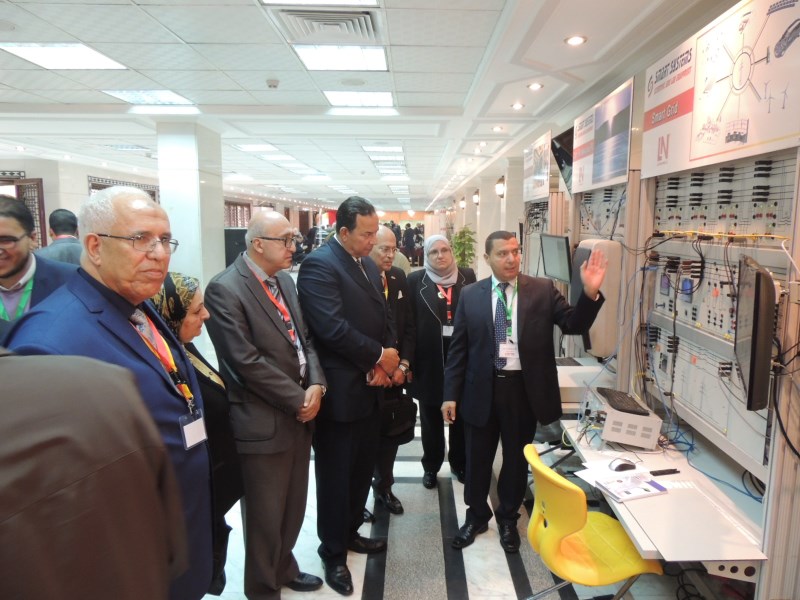Smart Grids - Intelligent Power Supply Networks
Smart Grids - Intelligent Power Supply Networks
In the future, new technology will better equip power grids for the demands of tomorrow. More flexible grid management should make the increasing proportion of renewable energy sources compatible with conventional infrastructures associated with power stations. The variety and number of these decentralised power plants require a revision in how we manage power grids – so-called intelligent networks or “smart grids”:
Improved coordination of energy requirements and energy generation, e.g. via intelligent switching of loads depending on the energy available
Using modern IT technology, like the internet, sensors, control systems and wireless transmission devices
“Smart metering” – digital current meters measure electricity consumption where customers are connected to the grid
Shifting household consumption away from peak load periods
Starting flexible applications such as washing machines outside peak load periods, at the initiation of a utility provider
The Lucas-Nuelle training systems have been designed in anticipation of these developments:
Smart measuring instruments provided with various communication interfaces (e.g. LAN, RS485, USB) and control elements
SCADA Power Engineering Lab software for the intelligent control and evaluation of smart grids using Soft PLC
SCADA software designed for educational purposes
Permits investigation of dynamically alternating loads and power generation inside the laboratory
Intelligent energy management
Modular integration of renewable energies into a smart grid using protective engineering
Wind power plant with doubly-fed asynchronous generator (DFIG) and synchronisation to the grid
Interactive multimedia training course
Training system on the generation, transmission, distribution, protection and management of electrical energy:
Energy management, smart grid training system
Energy generation, regenerative energy generation
High-voltage transmission lines, protective systems

Electric power distribution
Electrical power at large switching stations is distributed almost exclusively using double busbar systems. These stations incorporate switching matrices for connecting the two busbars, the incoming and outgoing feeder cubicles as well as the measurement fields. The incoming and outgoing feeder cubicles as well as the switching matrices are furnished with circuit breakers and one disconnector for each busbar terminal. For safety reasons, a particular switching logic must be strictly adhered to here. The double busbar model incorporates all functions of practical relevance. Integrated instruments for measuring currents and voltages permit direct analyses of switching operations.
Transmission lines
For your safety, the 380kV transmission lines are investigated and connected at a low-voltage level without detracting from the characteristics of a real high-voltage line. This realistic simulation of a 380-kV transmission line switches over automatically between line lengths of 300 km and 150 km (93.2miles and 186.4miles) once the overlay mask has been put into place. Joint use of several line simulation models connected in parallel or series permits complex networks to be assembled.
Line protection
In practice, medium-voltage and high-voltage networks are equipped with protective mechanisms connected via current and voltage transformers.
The equipment set offers the following benefits
Use of compact, original relays incorporating cutting-edge digital technology
Use of industrial safety relays from prestigious international manufacturers
Monitoring of protective features by means of SCADA (Supervisory Control and Data Acquisition)
A relay test option permits the relays to be checked individually
Investigating complex loads
Experiments on reducing peak loads through measurements with active-current and maximum-demand meters demonstrate how the load on an electricity supply network can be reduced and evenly distributed over a 24-hour period. An analysis of the power supply grid and connected consumers (loads) is necessary for effective use of the measurement techniques involved. Accordingly, each experiment permits a detailed investigation of static, dynamic, symmetric and asymmetric loads.
In this case, a three-phase asynchronous motor coupled with the servo machine test stand is used as a dynamic load. The active and reactive powers (cos-phi for the motor) depend on the motor load and are therefore not constant. The servo machine test stand can be used to drive the asynchronous motor, thereby feeding active power into the three-phase network. Reactive power compensation in alternating voltage networks is designed to reduce undesirable reactive current and resultant reactive power of consumers. In this process, capacitive loads are connected to all inductive loads via a central feed point. The opposing, capacitive reactive power arising here is ideally of the same magnitude as the installed, inductive reactive power. This reduces undesirable reactive currents, and none of the systems needed to supply the reactive current has to be over-dimensioned.

Supplementary to ESG 1
The following equipment sets on energy generation can be used optionally either individually or in combination to supplement the “ESG 1 Smart Grid” equipment set. As such extensive experiments can be realised to explore the “Smart Grid”.

